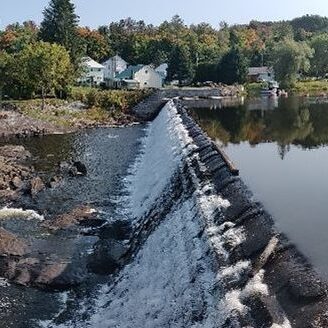The nearly $150-million fund delivers capital and technical guidance to growth-stage clean energy companies
New York, NY, March 8, 2022 — Greenbacker Capital Management, LLC (“Greenbacker Capital” or “Greenbacker”), announced today that its Greenbacker Development Opportunities Fund I, LP (“GDEV” or “the Fund”) has completed fundraising at $142 million, nearly reaching its $150 million hard cap. The Fund, launched in October 2020, provides flexible capital and access to Greenbacker’s best-in-class technical asset management team for growth-stage sustainable infrastructure companies. As of the Fund’s final closing, GDEV has made its first eight investments across multiple clean energy technologies, including solar photovoltaic electricity generation, hydroelectric generation, and battery storage.
The Fund’s first institutional investor was a fund managed by Aether Investment Partners, which finalized its commitment in June 2021. This investment was followed by commitments from UK-based asset manager abrdn and other institutional, family office, and high-net-worth investors. Notable investors joining the group as of GDEV’s final closing included the Montgomery County (Md.) Employees Retirement System and the pension fund of Ontario Power Generation, the latter of which became the Fund’s largest limited partner with its $40 million commitment.
Since inception, GDEV has committed approximately $80 million to its existing portfolio companies. It has also spurred $10 million of incremental co-investment directly into these companies, as investors recognized their potential for success—particularly with Greenbacker’s support.
“When we launched, we discovered there was a huge appetite for our niche within sustainable infrastructure—finding management teams on the cusp of significant growth and getting them to the next level,” said Ben Baker, Managing Director and Principal of GDEV. “That means we’ll be there for a lot of the firsts of our companies. It’s more grey hair for us, but it’s worth it. Our partners really like that we actually have the hands to be hands-on for them.”
Partnering with GDEV allows companies to benefit from the resources of Greenbacker Capital, including access to its technical asset management team. This could mean advice on best practices during project development, construction, and operations. It can mean tapping into Greenbacker’s industry relationships and scale to help secure components like solar modules or steel racking—something companies have found particularly attractive during a period of global supply chain dislocation. It can also create opportunities for synergy with other funds managed by Greenbacker.
Two of GDEV’s portfolio companies, Chaberton Energy Holdings (“Chaberton”) and OYA Solar (“OYA”), have also closed transactions with Greenbacker’s affiliated infrastructure business since the Fund introduced them. In May 2021, Chaberton was selected to develop over 200 MW of solar projects for Greenbacker’s infrastructure endeavor and has also agreed to sell it two other projects. At the end of 2021, OYA secured funding from the infrastructure business for a 127-MW community solar portfolio in upstate New York.
One of GDEV’s strengths has been finding opportunities in the marketplace that connect innovative revenue models with older renewable energy technologies to make them viable today. A prime example of this concept is small hydroelectric generation which, in certain markets, can take the energy generated by a centralized hydro facility and virtually sell it to consumers in the area via the existing power grid infrastructure.
For hydro, this wasn’t always the case. A few years ago, hydro projects could only either sell their power via power purchase agreement or into the grid on a merchant basis. Today, given new regulatory frameworks, they have the opportunity to access the more innovative revenue models that have been created for newer technologies like solar and battery storage.
“Hydro is a very underserved and overlooked element of clean energy,” Baker said. “It’s not a shiny, new idea—in fact, turbines from over a hundred years ago are still generating electrons for our portfolio today. Hydro is an older technology, with many existing projects that can benefit from redevelopment.”
Baker is also focused on what’s next in the renewable energy asset class. One area of interest: mobility. “Electric vehicles (EVs) and their associated charging infrastructure have fallen squarely under the clean energy umbrella. There are many private infrastructure funds and companies looking to finance EV fleets and build and operate charging stations,” he said.
The transportation sector is one of the main sources of greenhouse gases in the US, accounting for 29% of all emissions.1
Baker is also keeping a close eye on grid resiliency. “When we think about the energy needs of hospitals and schools, or even food processing plants that have to toss anything in production when the power goes out, it’s clear that we need more energy storage and microgrids to keep things running.”
One way to improve grid resilience is battery energy storage systems, like those developed by GDEV portfolio company Delorean Power. Such projects are essential for meeting consumers’ growing energy needs and helping the grid better adapt to increasing adoption of renewable power.
Along with the other technologies GDEV invests in, battery storage is also a critical component of the clean energy transition—a shift that will require considerable capital. According to Bloomberg, achieving zero carbon emissions in the US alone by 2050 will require $2.5 trillion of investment by 2030.2
“GDEV’s successful fundraising shows that there is significant investor appetite for opportunities to fund the energy transition,” said Charles Wheeler, President of Greenbacker Capital. “We’re incredibly excited about the Fund’s prospects, particularly as the renewables industry finds increasingly efficient ways to produce and deliver affordable clean power.”
1 The United States Environmental Protection Agency website, “Fast Facts on Transportation Greenhouse Gas Emissions.”
2 Bloomberg Green, “Getting U.S to Zero Carbon Will Take a $2.5 Trillion Investment by 2030,” December 2020.

